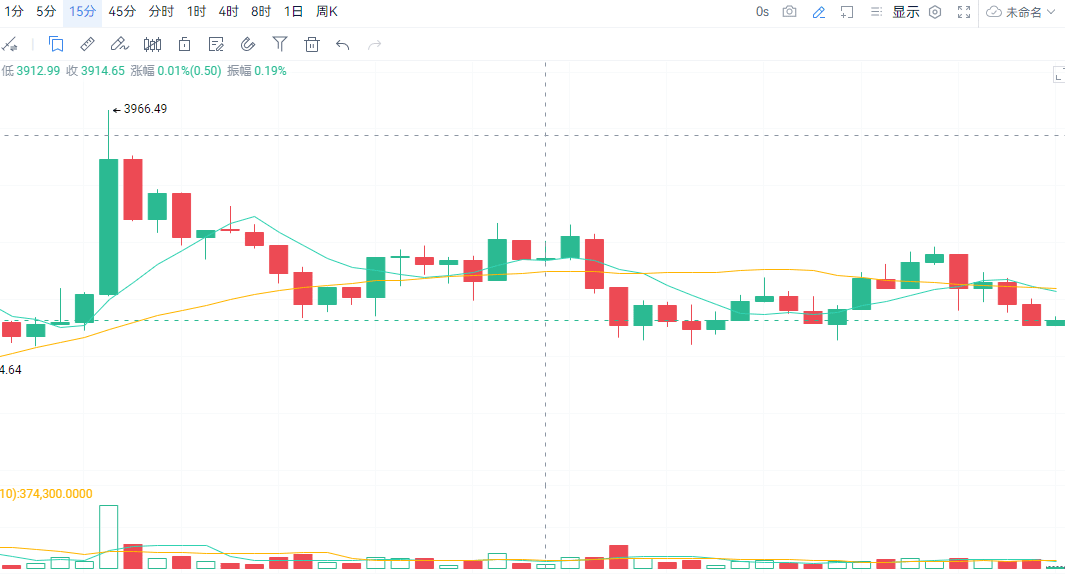
The 15-minute candlestick chart is an important tool for short-term trading; below are some common best buy and sell point analyses:
Buy signal
Moving average golden cross
When the 5-day moving average crosses above the 20-day moving average (or the 21-day moving average), forming a 'golden cross', it is usually seen as a short-term buy signal.
If the stock price simultaneously stands above the 60-day moving average ('God's hand'), along with a noticeable increase in volume, it is a more reliable buying opportunity.
Pattern breakout
If the stock price forms bottom patterns like double bottoms or head and shoulders bottoms on the 15-minute chart, and breaks the neckline with increased volume, it can be seen as a buying opportunity.
Bullish engulfing pattern (a bullish candle covering a bearish candle) combined with a moving average golden cross is a strong reversal signal for the day.
Indicator resonance
RSI indicator below 30, with a bottom divergence (the stock price makes a new low but RSI does not), combined with a bullish moving average arrangement, indicates an oversold rebound opportunity.
The MACD indicator has a golden cross above the zero line, and the red bars are gradually lengthening, while the stock price stabilizes above the moving average system; consider buying.
Sell signal
Moving average death cross
The 5-day moving average crosses below the 20-day moving average (or the 21-day moving average), forming a 'death cross', which is a short-term sell signal.
If the J value of the daily KDJ reaches 100 (overbought state) and the stock price breaks below the 5-day moving average, it may be time to exit.
Pattern breakdown
The stock price breaks below important support levels (such as previous lows or the moving average system), or forms top patterns like 'M tops' or 'double tops' during an uptrend, accompanied by increased volume, is a sell signal.
If the stock price forms bearish patterns such as long upper shadows or hanging man patterns on the 15-minute chart, and opens low or declines on increased volume the next day, it should be sold decisively.
Indicator divergence
RSI indicator above 70, with a top divergence (the stock price makes a new high but RSI does not), indicates short-term top risk.
The MACD indicator has a death cross above the zero line, and the green bars are rapidly enlarging, while the trading volume shrinks, indicating a selling opportunity.
Notes
Risk control: Strictly set stop-loss levels (such as breaking important moving averages or a daily drop of 5%) to avoid excessive chasing and panic selling.
Capital management: 15-minute candlestick operations should not exceed 1/3 of total funds to avoid heavy positions.
Market environment: This method is more suitable for short-term trading during unstable market conditions; in a bull market, it is recommended to focus on 60-minute or higher timeframes.
The above signals should be combined with multi-timeframe candlestick analysis (such as daily and 60-minute charts) for comprehensive judgment to avoid misinterpretation from a single indicator. Short-term trading requires discipline and should not blindly chase or sell.


